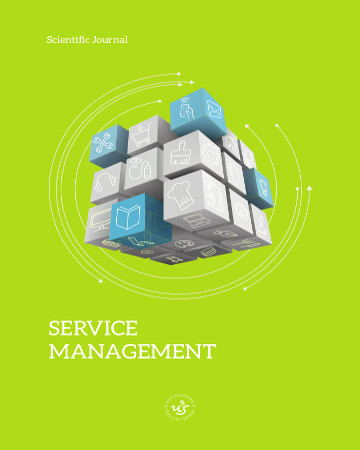
ISSN: 2450-8535
eISSN: 2353-2858
OAI
DOI: 10.18276/ejsm.2016.17/1-08


Lista wydań /
Vol. 17, 1/2016
Effectiveness of reciprocal rule in tourism: evidence from a city tourist restaurant
| Autorzy: |
Anastasiya
Gladka
Andrzej Frycz Modrzewski University of Cracow Michał Żemła Pedagogical University in Cracow |
| Słowa kluczowe: | reciprocity restaurant Cracow |
| Data publikacji całości: | 2016 |
| Liczba stron: | 7 (57-63) |
Abstrakt
The paper concerns the phenomena of reciprocal exchange which is know in social relations since ages and also used in business relations. Reciprocity is also a popular tool in tourism business. Presented research were conducted in a form of experiment in one of restaurants in Cracow city center. It was found that a small gift from a waiter (a chewing gum) lead to an increase in tips. Surprised and feeling grateful customers decided to leave a bigger tips than usually
Pobierz plik
Plik artykułu
Bibliografia
| 1. | Bailom F., Matzler K., Hinterhuber H.H., Sauerwein E. (1996). Must-be quality and attractive quality. In.: K. Weiermair (ed.): Alpine Tourism. Sustainability Reconsidered and Redesigned. Innsbruck: University of Innsbruck. |
| 2. | Ballinger, G., Rockman, K. (2010). Chutes versus Ladders: anchoring events and a punctuated-equilibrium perspective on social exchange relationships. Academy of Management Review ,35 (3). |
| 3. | Bolster C. (1993). Theoretical parallels between Kano’s and Herzberg’s theories. Center for Quality of Management Journal 2 (4). |
| 4. | Cialdini, R. B. (1993). Influence: Science and practice. New York: HarperCollins. |
| 5. | Cialdini, R. B. (2001). Harnessing the science of persuasion. Harvard Business Review, October. |
| 6. | Cialdini R. (2002). Sweetening the Till: The Use of Candy to Increase Restaurant Tipping. Journal of Applied Social Psychology 32 (2). |
| 7. | Clayson, D. E. (2004). A test of reciprocity effects in the student evaluation of instructors in marketing classes. Marketing Education Review, 14. |
| 8. | Clayson D.E, Frost T.F., Sheffet M.J. (2006). Grades and the Student Evaluation of Instruction: A Test of the Reciprocity Effect. Academy of Management Learning & Education, 5(1). |
| 9. | Cook, K., Rice, E. (2003). Social exchange theory. In: J. Delameter (ed.), The handbook of social psychology. New York: Springer. |
| 10. | Diekmann, A. (2004). The power of reciprocity. Journal of Conflict Resolution 48. |
| 11. | Fehr M. (2011). The Two Sides of the Golden Rule: Living Assertively is Living Biblically. London: WestBow Press. |
| 12. | Frémeaux, S., Michelson, G. (2011). ‘No Strings Attached’: welcoming the existential gift in business. Journal of Business Ethics 99. |
| 13. | Gill C., Postlethwaite N., Seaford R. (1998). Reciprocity in Ancient Greece. Oxford: Oxford University Press. |
| 14. | Goss, D. (2008). Enterprise ritual: a theory of entrepreneurial emotion and exchange. British Journal of Management 19 (2). |
| 15. | Kano N. (1984). Attractive Quality and Must-be Quality. Hinshitsu. The Journal of the Japanese Society for Quality Control 14 (2). |
| 16. | Löfgren M., Wittell L. (2005). Kano’s theory of attractive quality and packaging. Quality Management Journal 12 (3). |
| 17. | Neusner J., Chilton B.D.: The Golden Rule (2008). The Ethics of Reciprocity in World Religions. New York: Bloomsbury Publishing. |
| 18. | Palmatier R.W., Jarvis C.W., Bechkoff J.R, Kardes F.R. (2009). The role of customer gratitude in relationship marketing. Journal of Marketing 73 (5). |
| 19. | Pouliot F. (1993). Theoretical issues of Kano’s methods. Center for Quality of Management Journal 2 (4). |
| 20. | www.merriam-webster.com/dictionary/reciprocity |
| 21. | Żemła M. (2008). The product quality of Polish ski-resorts: a case study of Silesian skiers’ requirements, satisfaction and complaints. Tourism. An Interdisciplinary Journal 56 (1). |